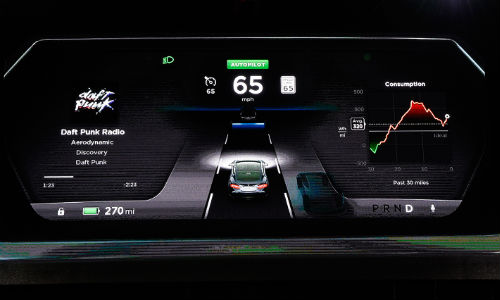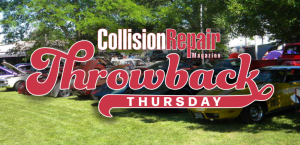By Jeff Sanford
Toronto, Ontario — October 23, 2016 — Highlights from the world of autonomous vehicles this week includes news that Tesla will turn off its Autopilot but continue to include the capability in its cars, Infineon Technologies intends to sell a LIDAR unit that costs just $25 and a new survey shows Americans may be far more ready to hop into a driverless car than anyone thought.
– The National Post reports Tesla will turn off the self-driving ability of its cars until more testing can be done. The company will continue to build self-driving ability into the vehicles, but the systems will be turned off until “further testing determines how safe they are.” Vehicles already on the road will continue to have functional Autopilot technology, but new vehicles being sold will have the tech turned off.
The safety of AVs is suddenly a topic. Over the past couple of months three people have died while using their Tesla in Autopilot mode. Now it seems auto executives are involved in a debate over how many miles driven and how much data are needed to declare an AV safe. Some say you need hundreds of millions of miles to be driven to give any substantial indication one way or the other. Others say it would take 10 years before any statement about the safety of cars could be made. One expert even suggested statistical significance would not occur for hundreds of years.
Federal regulators have been investigating the safety of the Autopilot system since the driver of a Model S sedan was killed on May 7 in Florida. Two other reported deaths from the Tesla has resulted in a movement to get Elon Musk to rein in his technology.
The newest Tesla models will have improved tech. New chips will contain forty times the processing power and there will be ultrasonic sensors. The story quotes an analyst report from RBC Capital Markets, saying, “The more vehicles out there collecting information (even when the system isn’t ‘operational’) the smarter the system can get … Tesla will be the first automaker out there with that ability.”
– Over the past three and a half years, Tesla’s share price has risen more than 400 percent. The company’s ballooning value has put it in the cross-hairs of short sellers.
“Because Tesla continues to bleed cash, and needs to raise money in the bond market to finance its car-making and energy operations, investors are betting its high-flying stock will come back to earth, if not in the near term, then in 2017, when lower-priced competition from Detroit starts to hit dealerships,” according to a report on Vice. “In the three months since mid-July, Tesla’s share price has fallen roughly 15 percent … Since Elon Musk announced in June his proposal to merge Tesla and another one of his companies, the solar technology firm SolarCity, short-seller interest in Tesla has spiked significantly. At one point, the demand for shorting the stock was so high that people betting against Tesla were collectively paying $1 million in fees in order to continue making their bet. Tesla has posted 13 consecutive quarterly losses. Incentives for electric cars are coming off. A flood of cheaper Detroit-built vehicles are coming to market, including the all-electric $30,000 Bolt.”
– Policy and legislation news site The Hill reports that California regulators are “weighing draft rules for driverless cars that some industry experts worry go further than recently released federal guidelines …The National Highway Traffic Safety Administration (NHTSA) unveiled voluntary driverless car guidance last month that includes a 15-point safety assessment that asks automakers to certify how they are addressing various standards such as privacy concerns and ethical issues.”
The approach is being called, “flexible,” an approach designed to strike a balance between safety and innovation while leaving room for the federal guidance to evolve with the emerging technology.
The California DMV proposal would require manufacturers to submit that federal checklist before testing or deploying automated vehicles in the state, which some industry experts said would defeat the purpose of the federal guidance’s flexible strategy. Marc Scribner, a research fellow for the Competitive Enterprise Institute, said the state proposal would threaten innovation, and he urged Congress to “slap down” California by explicitly preempting states when it comes to the safety performance and testing of self-driving cars.
Some safety advocates, on the other hand, worried that the regulations don’t go far enough to keep passengers and pedestrians safe. Consumer Watchdog testified at the hearing that the checklist is inadequate to protect public safety. The group urged the DMV to prohibit driverless cars on California roads until there are mandatory and enforceable federal standards in place.
“The proposed DMV rules would let robot cars without a driver on our roads if the manufacturer simply answers yes, no or maybe to each point on NHTSA’s 15-point safety checklist,” said Carmen Balber, Executive Director of Consumer Watchdog. “Absolutely no safety performance standards are required. We need more than a safety checklist written on toilet paper before we are sure driverless vehicles are safe to operate on public roads in California … That’s why we’re calling on the DMV to hold until federal regulators enact enforceable safety standards for driverless cars.”
– The US auto industry is, “facing off against the cable television, cell phone and other Wi-Fi-dependent sectors in an effort to preserve the radio spectrum reserved for vehicle-to-vehicle (V2V) communications,” according to a report on AutoServiceWorld. Connected cars need radio spectrum, and they’ve got some assigned. But other players want it.
“The Federal Communications Commission (FCC) allocated the 5.9 GHz Safety Spectrum band to dedicated short range communications (DSRC) in 1999 for the purpose of intelligent transportation systems (ITS). But with V2V automotive applications slow to develop, Wi-Fi users are demanding a piece of the V2V space,” according to the story. General Motors will be bringing DSRC technology to market this year in the model year 2017 Cadillac CTS. Delphi is also ready to, “ … install its devices in the aftermarket as well,” according to Joseph R. Dockemeyer Jr., Technical Fellow – Advanced RF Infrastructures and Services, Delphi Automotive. The cable television and Wi-Fi industries argue that they need part of the DSRC 5.9 GHz band to advance next-generation Gigabit Wi-Fi. ‘It is the only band that can support this technology,’ says Rick Chessen, Senior Vice President, Law & Regulatory Policy, National Cable and Telecommunications Association.”
– A German tech company is promising to make a key piece of self-driving car tech for just $25, according to a report from Reuters. “Infineon Technologies has acquired … a designer of miniature ‘LIDAR’ laser-scanning modules that the German chip giant says can help it to cut dramatically the cost of sensor systems for driverless cars. The deal will help to reduce the cost of light detection and ranging sensors (LIDAR) for use in guidance systems for mass-market vehicles. Infineon can deliver lidar for use in fully autonomous driving over the next five years for $25, a tiny fraction of the thousands of dollars the technology now costs, automotive chief Peter Schiefer told investors on a conference call.”
– European digital mapping business HERE announced that it is teaming up with Iowa’s Department of Transportation to transform a nearly 30-mile stretch of Interstate-380 into a special corridor for self-driving cars and trucks, according to a report on The Verge. The road would become an “open location platform, which includes real-time and predictive traffic maps, to help Iowa transportation officials develop ways for self-driving vehicles to better communicate with the infrastructure and other vehicles … It’s the kind of infrastructure upgrade that many experts believe will be needed across the country in order to enable self-driving vehicles to reach their full potential. Through a network of cameras and sensors attached to or embedded in permanent fixtures like traffic signs and streetlights, experts believe self-driving cars can a much better job communicating with their surroundings and other vehicles.”
– TechCrunch reports that interactive navigation app Waze announced that it is partnering with Esri, which provides “geographic information systems (GIS) software to 25,000 state, local and national governments. While the combination isn’t quite the vehicle to infrastructure (V2I) communication that will enable autonomous vehicles in the future, it is a kind of app-to-infrastructure system that improves traffic and creates more reliable maps for drivers right now.”
– Financial news network Bloomberg reports that Apple is “scaling back its driverless car initiative … ” Project “Titan” was to produce a self-driving car. Now Apple will focus on creating the AV system, “… rather than a complete vehicle … as auto makers and tech firms jostle for position in the market. “Outside of the US, German and Japanese auto manufacturers have also begun acquiring their own proprietary technologies to design systems which would not be reliant on American technology majors. Traditional carmakers worry most about losing control over data, becoming just another hardware supplier while California upstarts cream an increasing share of value off the top.”
– Contradicting the findings of a report prepared by the Canadian Automobile Association, a report out of the US finds that, “Americans may be far more ready to hop into a driverless car than anyone thought, according to a new survey by the Consumer Technology Association. The CTA questioned 2,001 people and found that 70 percent of them were ready to test-drive an autonomous car and almost as many were interested in replacing the car they own, lease or rent with a vehicle that drives itself. It was sharply at odds with a University of Michigan survey in April that found fewer than 16 percent of people were agreeable to having completely self-driving cars.”
– Check out this video of a Tesla driving itself:
Save





































